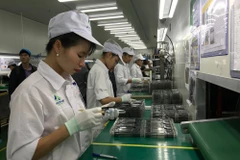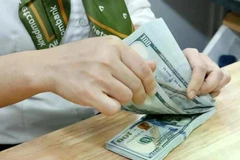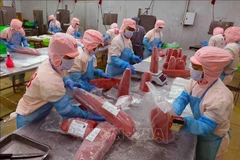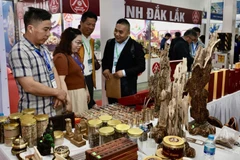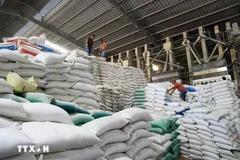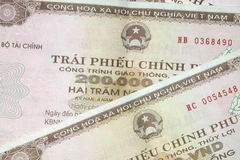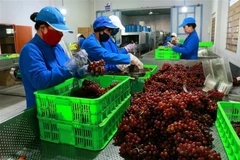Nguyen Huu Dung,Deputy Chairman of the Vietnam Association of Seafood Exporters andProducers (VASEP), said seafood exports gained ground in all majoroverseas markets. Export revenues to the US , for example, recorded agrowth rate of 27 percent, the Republic of Korea , 17.8 percent, andJapan , 17 percent.
With export pricescontinuously up 1.7 percent over the previous year, shrimp led in thefield with 2 billion USD in the export revenue, accounting for 40.7percent of the sector’s gross figure.
Tra fishalso enjoyed a huge jump-up in exports, earning some 1.4 billion USDfor the nation from exports of 680,000 tonnes last year.
Growth rates even hit 200 and 300 percent in Thailand and Russia ,respectively, despite numerous difficulties, said VASEP Deputy GeneralSecretary Nguyen Hoai Nam .
He cited dumpinglawsuits and catfish name imposed by the US, the trifluralin residueproblem and the red-listing of tra fish in the consumer guidance manualpublished in several European markets as major trade barriers againstVietnam’s tra fish and shrimp.
Consequently, theexports of tra fish have sent out signals of stop, leaving a number oftra fish raising ponds empty, thus making the product supply fall shortand leading to a surge in prices.
Nam forecast that the lasting situation at least until June and a low growth in tra fish exports in 2011.
Thailand , the Philippines , Malaysia and Indonesia havealso embarked on raising tra fish with financial support from theirgovernments, causing more difficulties for the domestic tra fishculture, said Vu Van Dung, head of the Aquaculture Department under theGeneral Department of Fisheries.
In an effort tocope with these difficulties, the Ministry of Agriculture and RuralDevelopment (MARD) has set itself to intensify investment in improvingquality to record between 1.45 and 1.55 billion USD in tra fish exportrevenue and over 2 billion USD in shrimp export revenue.
MARD Minister Cao Duc Phat said his ministry planned to base growthon sustainable factors such as resource refreshing, safety forfishermen, gradual restructuring of the fishing and aquaculture sectorand reduction of coastal fishing while boosting offshore fishing.
MARD also asked the fisheries sector to strictly applyinternationally-recognised standards codes and rules on qualityevaluation in aquaculture and seafood processing on a large scale.
The National Agro-Forestry-Fisheries Quality Assurance Department(NAFIQUAD) has asked shrimp and tra fish exporters interested in theJapanese market to register quality testing and certifying at regionalagricultural, forestry and seafood centres. The department has alsocalled on the Government to put a ban on Trifluralin in aquaculture andexporters to work with wholesale dealers and farmers to reachcommitments to non-use of the chemical./.

